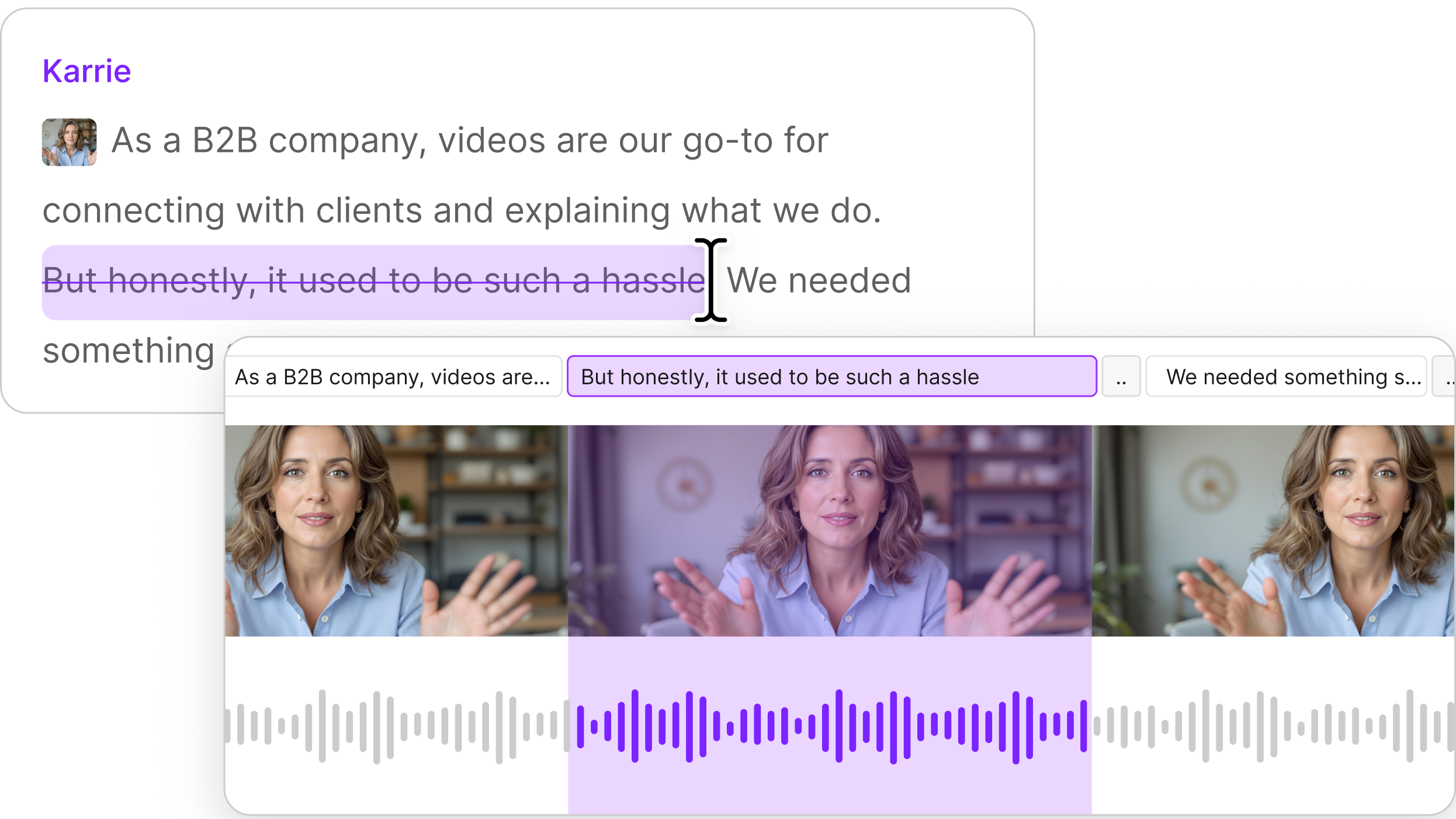We often imagine creativity with AI as a generator: brainstorm some ideas, write a poem, make an image, summarize this article. But lately, I’ve been experimenting with a different idea in my creative practice. Instead of asking AI to generate, what if it could find something I’ve already created?
When I saw Steven Johnson at the TED AI conference, he talked about using this kind of AI search in his own writing process. Johnson is a longtime notetaker and author of 13 books, and he’s also part of the project team behind Google’s NotebookLM. He described using AI to surface forgotten ideas from his archive or connect them in surprising ways.
That idea stuck with me. Not just because it’s useful, but because it showcases something AI can do that was impossible before — and I believe those are the use cases that matter most.
So what makes this kind of search so different? The power lies in how AI moves beyond simple keyword matching. It can identify subtle attributes, uncover patterns and themes, and help you see your own thinking with fresh eyes.
The best creative ideas might already be yours — you just need help finding them.
A new (but very old) relationship with our own ideas
I recently passed 1,000 notes in Obsidian, my daily thinking tool. I jot down reflections, track opportunities, collect quotes, explore ideas.
My note-taking is tech-enabled, but the practice itself is ancient. Writers and thinkers for centuries have kept commonplace books: handwritten notebooks filled with quotes, observations, sketches, and passing thoughts. Darwin kept one. So did Virginia Woolf. So did Leonardo da Vinci.
Over time, these books became more than just a collection of ideas. They were used as engines of synthesis: Johnson writes that if you look through Darwin's notebooks, you can see him nearly articulate his theory of evolution multiple times as he revisited his notes from his voyage on the Beagle. The real value wasn't in storing information, but in revisiting it, rearranging it, and discovering connections that weren't obvious at the time of writing.
Sure that sounds great. But how do you actually do it when you have hundreds or thousands of notes? Rereading everything is extremely time-consuming and like most people, I have trouble finding the time to reread everything. The archive grows faster than I can digest it.
That’s why I'm so excited about AI search. AI can search through more content than we ever could by hand and surface meaningful themes and connections that would otherwise remain hidden. That process of returning to past insights with a new lens is what makes AI-powered search such a radical new chapter in the history of the commonplace book.
The overlooked capability that makes this possible
There is a quiet capability many of us overlooked that's finally making this previously impossible task possible: a larger context window.
Earlier models could handle thousands or maybe tens of thousands of words. But the tools available now? We’re talking hundreds of thousands, sometimes even millions. That’s a game changer.
- ChatGPT 4o: 128K tokens (~250 pages of text)
- Claude Pro: 200K+ tokens (500 pages of text)
- Gemini 1.5 Pro: 2M tokens
- LLaMA 4 Maverick: 10M tokens
- NotebookLM: 500K words per source X 50 sources
To put that into context, Shakespeare's entire works total about 1.5 million tokens.
That means if you’re planning to use AI for search, the size of the context window matters—a lot. Make sure the tool you're using can actually hold the material you're working with. If you’re querying across multiple documents or prompts, leave yourself room. You don’t want to hit the ceiling mid-thought.

The practical implication? You can now upload entire books, research archives, or multi-year journals and ask meaningful, structured questions about the whole corpus. That alone unlocks an entirely new way of thinking about your creative past and future.
You’re no longer limited to what you can remember or what you have time to reread. With a large enough context window, your entire archive becomes searchable, remixable, alive.
And that’s where things start to get really interesting.
The many ways to use AI search
Although I’ve had great success feeding my own personal content into AI tools and asking them to sift through it, there are other kinds of material that can be just as useful to explore in this way.
- Personal notes or journal entries: Just be mindful of privacy. If your notes contain sensitive data, consider scrubbing or redacting before uploading.
- Documents related to something you’re researching or learning: Think transcripts, research papers, essays, or any relevant literature. Just watch out for copyright issues. Some tools don’t allow you to upload content you don’t own, so check the terms.
- Clipped articles, reports, or other content on a theme: Curating a mini-library on a single topic can reveal patterns you wouldn’t see from any single piece alone. (Again, be mindful of copyright.)
- Creative work: Drafts, stories, poems, essays, or anything else you’ve made. If you’re cautious about your intellectual property, double-check tool settings to make sure you’re not accidentally opting into training use.
- AI output: Your own conversations with AI tools can be a goldmine. I often find that I say something insightful, weird, or worth revisiting, but it gets buried in the backlog. Search helps you bring it back.
The key is to upload enough material that contains your thinking, whether authored by you or curated by you, to create a meaningful playground for discovery.
Tip: If your archive includes both your own notes and external sources (quotes, AI outputs, etc.), most tools can’t distinguish authorship. Everything gets mashed together. That’s not always bad, but it’s important to be aware of it.
My favorite creative search techniques
Traditional search is limited to keywords and exact phrases. AI-powered search can go much deeper, looking for conceptual similarities, emotional resonance, and patterns that span across documents. Here are several approaches I've found particularly valuable.
Curation and prioritization: Finding what matters most
If you're trying to search through a large volume of materials, you almost certainly want to find a way to curate or prioritize the insights or ideas that the AI will surface. For instance, if you have dozens of things on the go, AI can help you triage and focus on what's most critical.
When prompting the tools to prioritize, ask for them to include the reasoning behind that ranking or use a reasoning model like o3-mini or DeepSeek r1. That way, you can see whether you agree with its assessment or not, or suggest additional criteria for it to consider in its response.
Prompt:
- Can you prioritize these opportunities based on their potential for impact? Explain your reasoning for each ranking.
- What are the most important points in this course module that I should cover in the video overview?
- What are the most important points in this research that I should emphasize in my presentation? Include both practical applications and theoretical implications.
- Identify the three most promising ideas in these notes and the three most overlooked ideas that deserve more attention.
Categorization and finding examples: Making structure from chaos
Sometimes you’re not looking for one great insight, you’re trying to map the landscape. This is especially useful in research because you can use AI to quickly surface relevant insights or information instead of skimming the content or trying to CTRL-F your way to relevant content.
Categorization like this helps you create structure. It can group a messy archive by theme, tone, format, or intent. It also helps you find examples of concepts or styles you've used before, even when they don't use the same language.
This is great for anyone who has a lot of archival content. For example, if you're a podcaster with lots of episodes, you can use it as part of your interview prep process. Before interviewing someone new, search all past mentions of their field to avoid repeating yourself or missing relevant callbacks. I've also used it to categorize and map open opportunities to see what kinds of projects I have on the horizon.
For instance, I uploaded a commonplace book written by art historian Anna Brownell Jameson to find interesting parallels to our current conversation around creativity and AI.
Claude pulled out several passages worth exploring, including this one on art criticism:


As you can see, there were many interesting parallels. It took about 15 seconds to upload and for Claude to analyze the content -- you can't beat that for time well spent.

Prompts:
- What ideas in this book are relevant to [X]?
- What opportunities are related to [X] in this archive?
- Which of these stories explored the theme of uncertainty or ambiguity?
- For each of the major themes you've identified, provide 2–3 concrete examples from my notes. Include direct quotes.
Emotional search
It might seem counterintuitive — with the A in AI standing for "Artificial" — but AI tools are surprisingly good at detecting emotional tone in text. That means you can retrieve or filter content not just by topic or keyword, but by sentiment, mood, or emotional intensity.
This opens up new ways to explore the emotional thread running through your work. For instance, if you're developing a narrative, it can help you visualize the emotional peaks and valleys across the storyline.
When I applied this to a novella I’m writing — a retelling of The Picture of Dorian Gray — I was genuinely impressed. My intention was for the sense of corruption to build slowly over time, with brief moments of relief before the tension escalated again. Check out the purple line — the emotional graph reflected that pattern clearly.

Tip: I found that it was more effective when I asked the AI tools to rate the emotionality of the text without using code, however if you want to instead review the material for keywords you can do that too. In my testing, my entries were too long for it to effectively write the code, so you may have some challenges if you had lengthy content.
Prompt:
- Can you please take this novella and map the emotional intensity for each chapter. Map multiple relevant emotions and indicate the reasons for the scoring for each section. Then create a graph of the emotions.
- Can you please take these journal entries and map the emotional intensity for each month. Track multiple relevant emotions (joy, frustration, curiosity, anxiety) and indicate the reasons for the scoring for each section. Then create a graph of the emotional patterns over time. Follow-up prompt: What emotional patterns remain invisible to me, and how might acknowledging them change my relationship with both writing and experience?
Temporal search and mapping
AI can help you trace the evolution of a specific theme across weeks, months, or years. This is particularly valuable for:
- Comparing meeting notes from the start vs. end of a project
- Seeing how your thinking on a particular topic has changed
- Creating a personal timeline of any idea or experience
I used this technique to map my energy levels during a recent business trip and I was absolutely shocked at how insightful it was.
Although it wasn't perfect out of the box, I worked with the tool cyborg-style to make sure I got exactly what I wanted, asking it to update its ratings based on my personal assessment in some cases. Overall the changes were minor — things like moving from a 4/5 to 5/5 for example. Otherwise it completely nailed the ratings.

After that, I could dig deeper with follow-up questions. The most eye-opening one came when I asked the AI to link my emotional state to my creativity. (Prompt: What creative metaphors and linguistic patterns emerge during different emotional states?)
The result? It noticed that my writing during high-energy periods was metaphor-rich and precise, while my low-energy writing was more staccato and filled with rhetorical questions. That reflection changed how I structure my writing schedule — leaning into the emotional rhythms instead of fighting them.
Prompt:
- Trace how my perspective on [X] has evolved over time. Identify key turning points where my thinking changed significantly, and explain what might have prompted those shifts. How did I describe this idea in early notes vs. later ones? Create a timeline of entries related to [X].
- Here are my last two weeks of notes. For each of the notes, please indicate the different emotions that I experienced. Please do this without using code. Reference specific parts of the notes and the current day in the analysis. Follow-up prompt: What might the emotional patterns suggest about my priorities and values?
Mining the gaps and patterns
Some of the most valuable insights don't come from what's immediately apparent in our notes, but from what's hidden between the lines—ideas you had but never followed up on, themes that are missing entirely, or commonalities or contrasts that are only apparent with a meta-analysis.
Dropped ideas
When you have tons of ideas, interesting ones inevitably get dropped. I try to review my notes from time to time, but let’s be honest: it’s time-consuming, and it doesn’t always feel like the best use of energy.
So why not let AI handle the first pass? I've found this pretty remarkable—it has allowed me to rediscover concepts I hadn't thought about in years.
Prompt: Of the motifs in this archive, which ones appeared at least twice but were never completed, followed up, or resolved? What ideas are mentioned in these transcripts but never received a thorough treatment?
What's missing
In a similar vein to dropped ideas, another useful way to search is to ask the AI tool to surface themes that don't appear.
This can help you uncover blind spots, gaps in your thinking, or topics you keep referencing without ever explaining. It’s especially useful for editing, curriculum development, or just gaining clarity on your mental defaults.
Prompts:
- What are some themes that don't appear that you might expect would be in these notes?
- What key ideas do I reference often but never explain clearly?
Commonalities and contrasts
Looking at commonalities and contrasts is one of the best ways to spot patterns across time and across your own thinking.
Commonalities help you see what you return to again and again — those ideas, themes, or motifs that feel sticky or magnetic. They often reveal your core interests, values, or questions.
Contrasts, on the other hand, can highlight the tensions or evolutions in your thinking. Maybe you argued one thing last year and something very different now. Or maybe your tone has shifted dramatically over time — from optimistic to skeptical, or from analytical to poetic.
This kind of pattern-tracking is especially useful when you're trying to find the throughline of your creative work or better understand the arc of a long-term project. You might discover that what you thought was a one-off experiment is actually part of a deeper pattern. Or that you've been wrestling with the same question, just in different guises.
Prompts:
- What are the most important recurring themes?
- Are there any opposites in my entries that I should be aware of?
- What are common themes in the ideas across these notes?
- What ideas appear consistently across different contexts or projects?
- Where do my notes from early 2023 differ most significantly from my recent thinking?
Search is just the first step
Search is only the start of creatively using resurfaced insights. Once you’ve uncovered patterns, themes, forgotten ideas, or emotional arcs, you can work with what you've found — combining, extending, or even just reigniting ideas you'd forgotten about.
I think this is a fundamental shift in how we might use AI for creativity. Not just as a generator of new content, but as a tool for rediscovering, reorganizing, and reimagining what we already know.
The next time you find yourself staring at hundreds or thousands of notes, wondering what insights might be hiding within them, remember that you now have tools that can help you see patterns even the most diligent human would miss. The answers you seek might already be there in your archive, waiting for the right kind of search to bring them to light.






















